What Is an x-Coordinate?
The x-coordinate specifies the horizontal distance of a point from the origin (0,0). It tells us how far to the left or right the point lies along the X-axis. If the point lies to the right of the origin, the x-coordinate is positive; if it lies on the left, the x-coordinate is negative.
The x-coordinate of a point is the first element in the ordered pair (x, y). The x-coordinate is also called the “abscissa” or “horizontal coordinate.”

The x-coordinate in math indicates how far a point on a graph is from the origin, measured across the horizontal axis. Positive x-coordinates are located on the right of the origin, while negative x-coordinates are to the left.
Similarly, the y-coordinate of a point determines its vertical distance from the origin or the X-axis. The y-coordinate is also known as the “ordinate.”
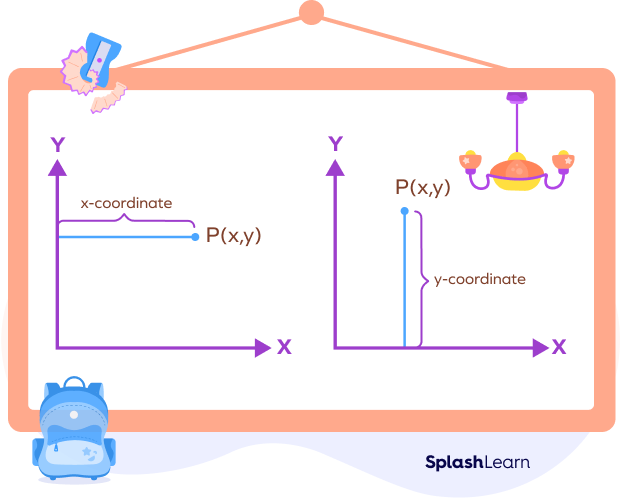
In the Cartesian coordinate system, the x-coordinate and y-coordinate are the values used to represent the positions of points in the 2D space. The x-coordinate represents the horizontal position of a point along the X-axis, while the y-coordinate refers to a vertical position along the Y-axis.
Example: The given point has coordinates (3,2). Here, the x-coordinate is 3.
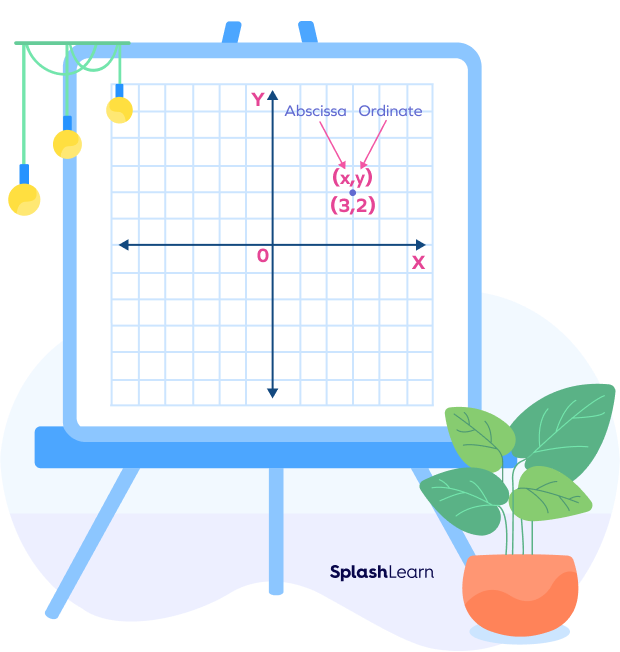
Recommended Games
What Does the x-Coordinate of a Point Tell You?
The x-coordinate of a point tells you how far the point is from the Y-axis.
- If the x-coordinate is positive, the point is to the right of the Y-axis.
- If the x-coordinate is negative, the point is to the left of the Y-axis.
Recommended Worksheets
x-Coordinate Definition
The x-coordinate is the first value in the ordered pair (x, y) that represents the horizontal position of a point in the Cartesian coordinate system. It can also be defined as the value representing the distance from the point to the vertical axis (Y-axis), with positive values to the right of the origin and negative values to the left.
Understanding the Cartesian Coordinate System
A coordinate plane is a two-dimensional plane formed by the intersection of two number lines. One of these number lines is a horizontal number line called the X-axis, and the other is a vertical number line called the Y-axis. These two number lines intersect at a right angle to form the coordinate plane.
- The Cartesian coordinate system consists of two intersecting lines, the X-axis and Y-axis, with their point of intersection at the origin (0,0). The cartesian system is divided into four quadrants by the intersection of two axes.
- The X-axis is horizontal, representing horizontal positions, and is labeled with increasing numbers from left to right. The equation of the X-axis is y = 0, as its points always have a y-coordinate of 0.
- The Y-axis is vertical, indicating vertical positions, and is labeled with increasing numbers from bottom to top. Its equation is x = 0, as all Y-axis points have an x-coordinate of 0.
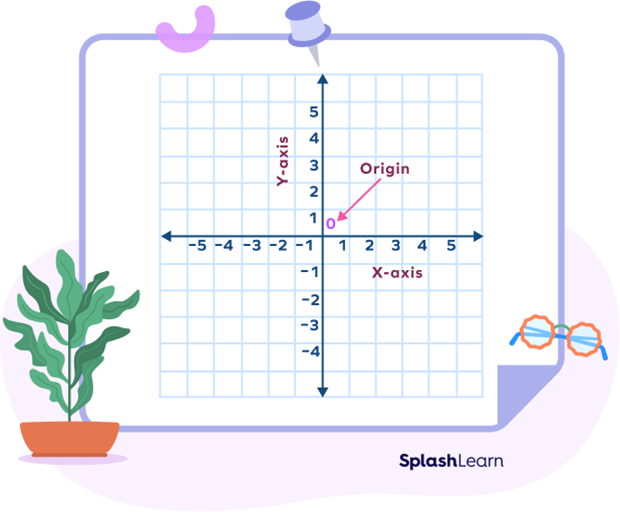
A coordinate plane is divided into sections called quadrants. Each quadrant guides the sign conventions of the coordinates.
- Quadrant 1: Both coordinates are positive.
- Quadrant 2: The x-coordinate is negative, and the y-coordinate is positive.
- Quadrant 3: Both coordinates are positive.
- Quadrant 4: The x-coordinate is positive, and the y-coordinate is negative.

How to Plot Coordinates on the Coordinate Plane
We use the Cartesian coordinate system to locate a point on the plane. Follow the steps below to plot an x-coordinate on the coordinate plane.
- To plot the x-coordinate on the coordinate plane, move x units right or left from the origin. If the x-coordinate is positive, move x units to the right; if it’s negative, move x units to the left. Mark this point.
- To plot the y-coordinate, move y units up or down from the marked point. If the y-coordinate is positive, move y units up; if it’s negative, move y units down.
Example 1: Plot (3, 0) and (-3, 0).
For (3, 0), the x-coordinate 3 is positive, and the y-coordinate is 0. So, we only move 3 units to the right from the origin.
For (-3, 0), the x-coordinate -3 is negative, and the y-coordinate is 0. So, we only move 3 units to the left from the origin.
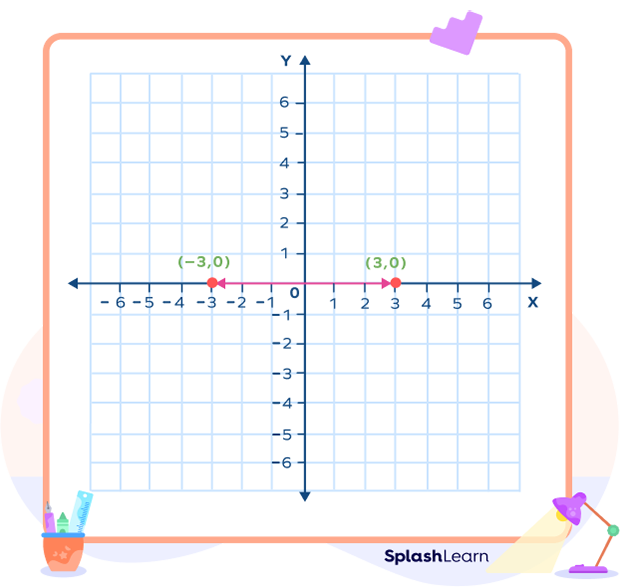
Example 2: Plot (2, 3), (-3, 1), and (3, -2).
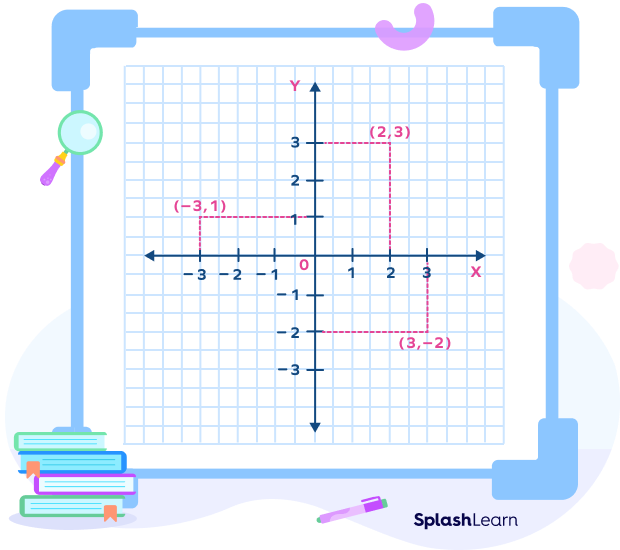
How to Read the Coordinates of a Point Marked on a Coordinate Plane
- To read the x-coordinate of a point, we count the number of units the point is to the right or left of the origin.
- To read the y-coordinate of a point, we count the number of units the point is above or below the origin.
- Next, identify whether the coordinates are positive or negative based on its position or the quadrant the point lies in.
i) If the point lies to the left of the origin, the x-coordinate is negative; if it lies to the right, the x-coordinate is positive.
ii) If the point lies above the origin, the y-coordinate is positive; if it lies below the origin, the y-coordinate is negative.
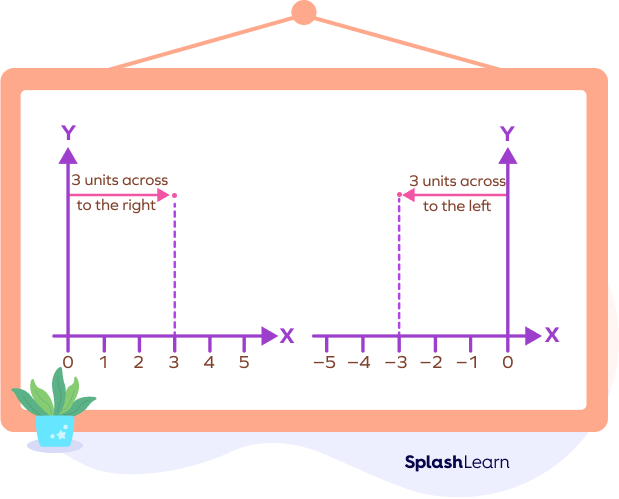
Example: To identify the coordinates the given points represent, we draw perpendicular lines from each point to both axes.

Facts about x-Coordinate
- If the x-coordinate of a point is 0, the point lies on the Y-axis.
- The line x = a represents a line parallel to the Y-axis. Here, the x-coordinate of each point on the line remains constant: a. The y-coordinate keeps changing.
Conclusion
In this article, we learned about the meaning and definition of the x-coordinate of a point. We also discussed how to identify the coordinates and plot the coordinates of a point on the Cartesian plane. Let’s solve a few examples and practice problems for better comprehension.
Solved Examples on x-Coordinates
Example 1. Identify the x-coordinate and y-coordinate of the given point.
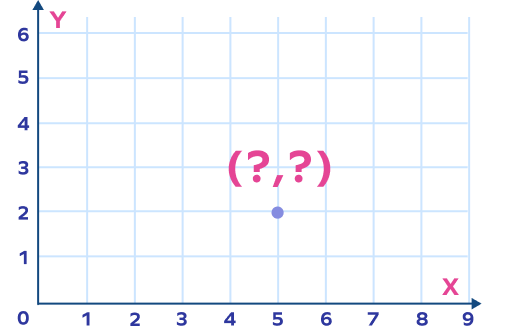
Solution: To read the x-coordinate, we count the number of units the point is to the right or left of the origin. To read the y-coordinate, we count the number of units the point is above or below the origin.
- Here, the point lies 5 units to the right of the origin.
Thus, the x-coordinate of the point is 5.
- The point lies 2 units above the origin.
Thus, the y-coordinate of the point is 2.
The coordinates of the given point are (5, 2).
Example 2. Plot the given points on the coordinate plane: A(4, 4), B(-3, 1), C(-5, -2), and D(2, -3).
Solution:
Let’s plot the given points on the coordinate plane using the given coordinates.

Example 3. Plot the given points: (3, 0), (0, -5), and (3, -5)
Solution:
Let’s plot the given points on the coordinate graph.
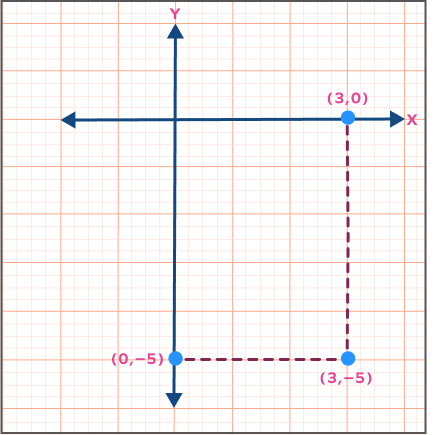
Practice Problems on x-coordinates
X-Coordinate - Definition, Facts, Examples, Practice Problems
What is the x-coordinate of $(10, -7)$?
The x-coordinate is the first element in the ordered pair $(10, -7)$, which is 10.
Find the x-coordinate of the given point.
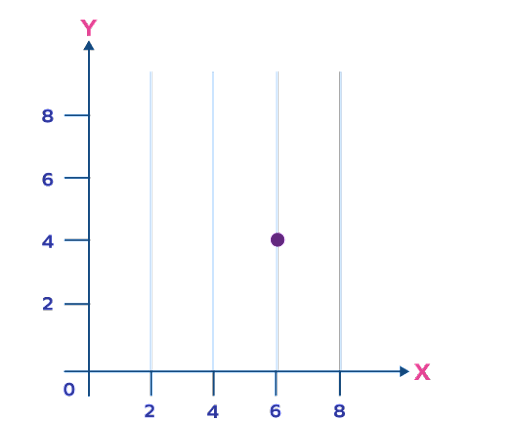
The point lies 6 units to the right of the origin. Thus, the x-coordinate is 6.
The point (0, 5) lies on the
The x-coordinate is 0.
Therefore, the point lies on the Y-axis.
The x-coordinate of a point that lies on the Y-axis will be
The x-coordinate is the distance from the Y-axis. If a point lies on the Y-axis, this distance will be 0. Thus, the x-coordinate of a point on the Y-axis is 0.
Frequently Asked Questions about x-Coordinates
What is the x-coordinate of the origin?
At the origin, the value of the x-coordinate will always be 0.
As we move from left to right on the cartesian plane, what happens to the x-coordinate?
As we move from left to right on the cartesian plane, the value of the x-coordinate increases.
What does the line x = y represent?
For every point on this line, the values of the x-coordinate and y-coordinate are equal. This line passes through the origin.




































